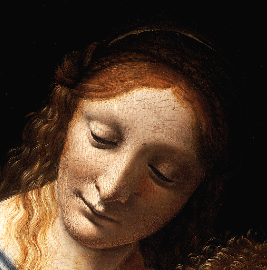<body><p>Array</p></body>
[[{"fid":"1205","view_mode":"default","fields":{"format":"default","field_file_image_alt_text[und][0][value]":"","field_file_image_title_text[und][0][value]":"","field_copyright[und][0][value]":""},"type":"media","attributes":{"class":"media-element file-default","style":"height: 583px; width: 450px; float: left;margin-right:20px"}}]]
But the 16th century, which Italians refers to as the Cinquecento saw the emergence of two profoundly original schools.
While Venice was dominated in the late 15th century by Giovanni Bellini, whose influence is noticeable in The Dead Christ by Marco Basaiti, Milan welcomed Leonardo da Vinci, the great Florentine genius, to the city. His research left an indelible impression on a whole generation of Lombardian painters active in the first part of the 16th century, led by Giovanni Antonio Boltraffio and Bernardino Luini.
In Venice, the death of Bellini in 1516 made way for Titian whose interest in colour started a whole new period in Venetian art. Veronese and Tintoretto followed in his footsteps. Religious commissions remained an essential source of income for the painters, but secular art emerged in the sidelines. Ancient mythology took inspiration from new subjects, pretexts for the representation of erotic scene, much coveted by the cultivated elite.
© Giovanni Antonio Boltraffio, Vierge à l’Enfant, vers 1495, Budapest, musée des Beaux-Arts


